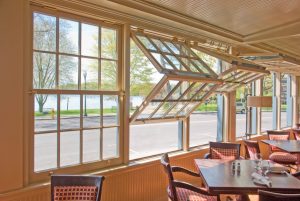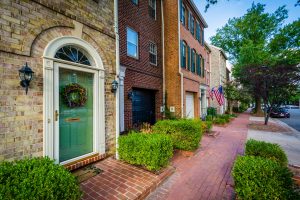Building Code Updates
 The update process to the Virginia Uniform Statewide Building Code (USBC) has begun*. This is a two year process, which will wrap up at the end of 2020. The Board of Housing and Community Development will hold a public hearing on July 22, 2019 and we encourage our members to attend in support of improvements to the energy code section of the USBC.
The update process to the Virginia Uniform Statewide Building Code (USBC) has begun*. This is a two year process, which will wrap up at the end of 2020. The Board of Housing and Community Development will hold a public hearing on July 22, 2019 and we encourage our members to attend in support of improvements to the energy code section of the USBC.
This spring, DHCD staff established smaller subgroups on key areas of interest, including energy, for the purpose of building consensus on some of the proposals already submitted. VAEEC and several of our members are participating in the energy subgroup, which has already met once. The following energy proposals, which would bring the USBC inline with the 2018 model code, have been reviewed by the subgroup:
- Energy codes for existing buildings (several proposals): ongoing discussion
- Ceiling and wall insulation: moving to workgroup for review as non-consensus
- Air leakage testing: ongoing discussion
- Commercial fenestration: ongoing discussion
- Replacement fenestration: moving to workgroup for review with consensus
- REScheck: ongoing discussion
- Certificate: ongoing discussion

Regarding the existing building energy code proposals, the discussion centered around where the proposals should live within the USBC. Some code officials argued that they should live solely in the Existing Building (VEBC) section of the USBC, while other officials argued they should live in both the energy conservation codes and the VEBC. Another issue was that several proposals that attempted to strike existing building language from the energy conservation code actually weakened existing requirements. A small subset of subgroup members will work together to come up with a solution that works for everyone prior to the next subgroup meeting. As long as the existing energy code requirements remain intact, VAEEC does not have a position on which chapter is the right place for these proposals to live.
The proposal on insulation would have brought Virginia’s code up to the 2012 model code requirements. This proposal was opposed by the Homebuilders Association of Virginia, so it was marked as non-consensus. Their arguments were that it would “price someone out” of the market, that codes should be a minimum, and that there would be diminishing returns despite the proposal impact statement stating that this change would garner 6% in energy savings for homeowners, which is the greatest energy savings of any single proposal. We are disappointed that this proposal is moving forward as non-consensus, which effectively kills the proposal.
While we are pleased that the air leakage proposal did not suffer the same fate as the insulation proposal, the debate was just as spirited. VAEEC member Viridiant presented the initial findings from DOE Field Study they conducted in conjunction with another VAEEC member, Southeast Energy Efficiency Alliance, which highlighted that 25% of new homes being built to code are failing to meet the five air changes per hour requirement in the current USBC. If I could read the tea leaves, I think it might be possible for the blower door test to become part of the next USBC update, but the change from five air changes per hour to three will not move forward.
Next up were the two window fenestration proposals, which would bring the USBC up to the model code standard. While the window replacement proposal moved forward with consensus, the commercial proposal was concerning to the Apartment and Office Building Association (AOBA) due to implications for multi-family units. The AOBA official is taking the proposal back to his membership for review and will provide feedback at the next meeting.
The last two proposals were more administrative in nature. Because of some of the weakening amendments in Virginia’s code, Virginia builders, designers, and contractors cannot use the DOE REScheck software, to ensure code compliance on new construction, additions, or renovations. One of the proposals would remove language that refers Virginia builders, designers, and contractors to guidance documents DHCD has offered as an alternative. However, other proposals, such as the insulation and window fenestration proposals, would need to be approved as well. The other administrative proposal would require a permanent certificate within the structure, which would provide details on the thermal envelope, including insulation ratings and window U-values. VAEEC member Think Little explained that this would be extremely helpful in their work when they are working with a client to replace their HVAC system. Typically, they have to guess many of these data points, which could cause them to incorrectly size the new HVAC system. There was a lengthy discussion on where the certificate should be housed- particularly as it pertains to multi-family and commercial buildings. A smaller group of attendees are going to work out the details prior to the next subgroup meeting. This proposal should eventually move forward with consensus.
The subgroup will meet once more in early to mid summer to continue discussions on the remaining proposals and to determine if consensus can be reached on any of them before the proposals are reviewed by the workgroup. All workgroup activities will wrap up by the end of the summer. After that, all proposals will be reviewed by the DHCD Board who will then vote on all of the proposals that went through the workgroup process. All proposals approved by the DHCD Board will form the draft USBC, which will be reviewed and voted upon in the fall. The draft USBC will then go to the Virginia Register for a public comment period, and the process will begin all over again next year.
*You can visit the main building codes page on the VAEEC website to learn more about the development of the federal model code as well as the Virginia update process.
